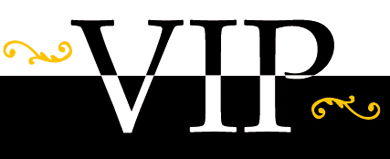
When you start working with a new one-on-one or high-end client you want to set the scene for your relationship together and make them feel that they really have made the right choice in deciding to work with you – even though YOU know that they have!
Whether you’re a coach, VA, or other service professional when you work one-on-one with your high-end clients you need to develop the “VIP experience” so that your clients feel that they are more than “just another client”. This goes beyond the professional, courteous, customer service that is part of your business but extends into the “experience” of your business – it’s about how you make your clients feel and the experience they get as a result of working with you.
One of ways in which you can do that is to develop a Welcome Packet that you give to your client as soon as you’ve agreed to work together. A Welcome Packet is a document – it can either be printed and mailed or digital and emailed – that you send out to your new clients when they sign up to work with you, and cements the relationship you are about to have with them.
Each business owner’s Welcome Packet is going to be different, depending on their business and what they want their clients to know, but what I’d like to share with you today are some key elements for including in your Welcome Packet. You don’t have to include all of these in your own, simply use this as a guide for developing your own unique Welcome Packet:
1. Welcome Note from You: when your client opens their Welcome Packet make the first thing they see a welcome note from you. Introduce your business and tell them how you help clients – I know they may already know this from your initial conversation with them, but it helps to reinforce their decision.
2. Personal Note: include some personal tidbits about yourself, your background, and your story, i.e. how you came to be a solo service professional. If you can, add an informal picture so your clients get to see the person, not just the business owner. This will help to cement the relationship going forward as they’ll feel they’re getting to know you already.
3. Enrollment Form/Project Booking Form: depending on your profession you may have an enrollment form if you’re signing up a client to one of your coaching programs, or a project booking form if you’re a VA. On this form have space for your client to fill in all their details and a place for them to sign so that they can fax this back to you – and include all the details about your program/service that you’ve already discussed. This confirms the arrangement you’ve both made, and both parties know exactly what they’re signing up for.
4. Terms & Conditions: okay, this isn’t exactly exciting reading material but it’s very, very important. It sets out specifically what your terms and conditions are, i.e. payment policies, payment methods, confidentiality etc. etc. Now this part will very much be unique to your business, and if you’ve had something formal drawn up by an attorney make sure you include that here too.
5. Credit Card Authorization Form: you want to get paid, right? Be sure to include this form on a separate page so that your client can fax back their credit card details to you. And I *highly recommend* that you tell your client to fax or mail this form to you, and not email it. Why? Because this is confidential information and standard email is not secure – think in terms of a postcard being sent through the mail; anyone can read it!
6. Policies & Communications: this part is important because it sets the boundaries for your business. It lets your clients know, amongst other things, how and when they can communicate with you i.e. you can state that phone calls must be scheduled in advance or you’ll only take calls between certain hours – you don’t want clients calling you at eight o’clock on a Sunday evening, do you? And if you’re a VA it might include some information about how you schedule work priorities, handle urgent requests etc.
7. Additional Services/Programs: this can also be a good way to let your clients know about other services, products, and programs that you offer – just a one page sheet is enough to give them a taste of how else you can help them.
Oh… and one other point about creating your Welcome Packet – make sure it’s professionally laid out and presented – it all goes towards creating the “VIP experience” for your clients.